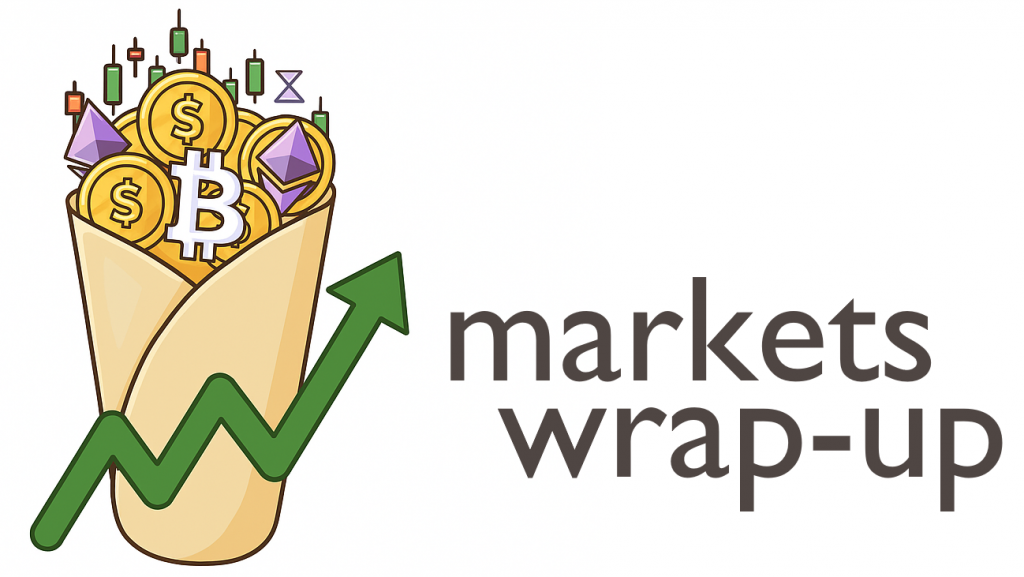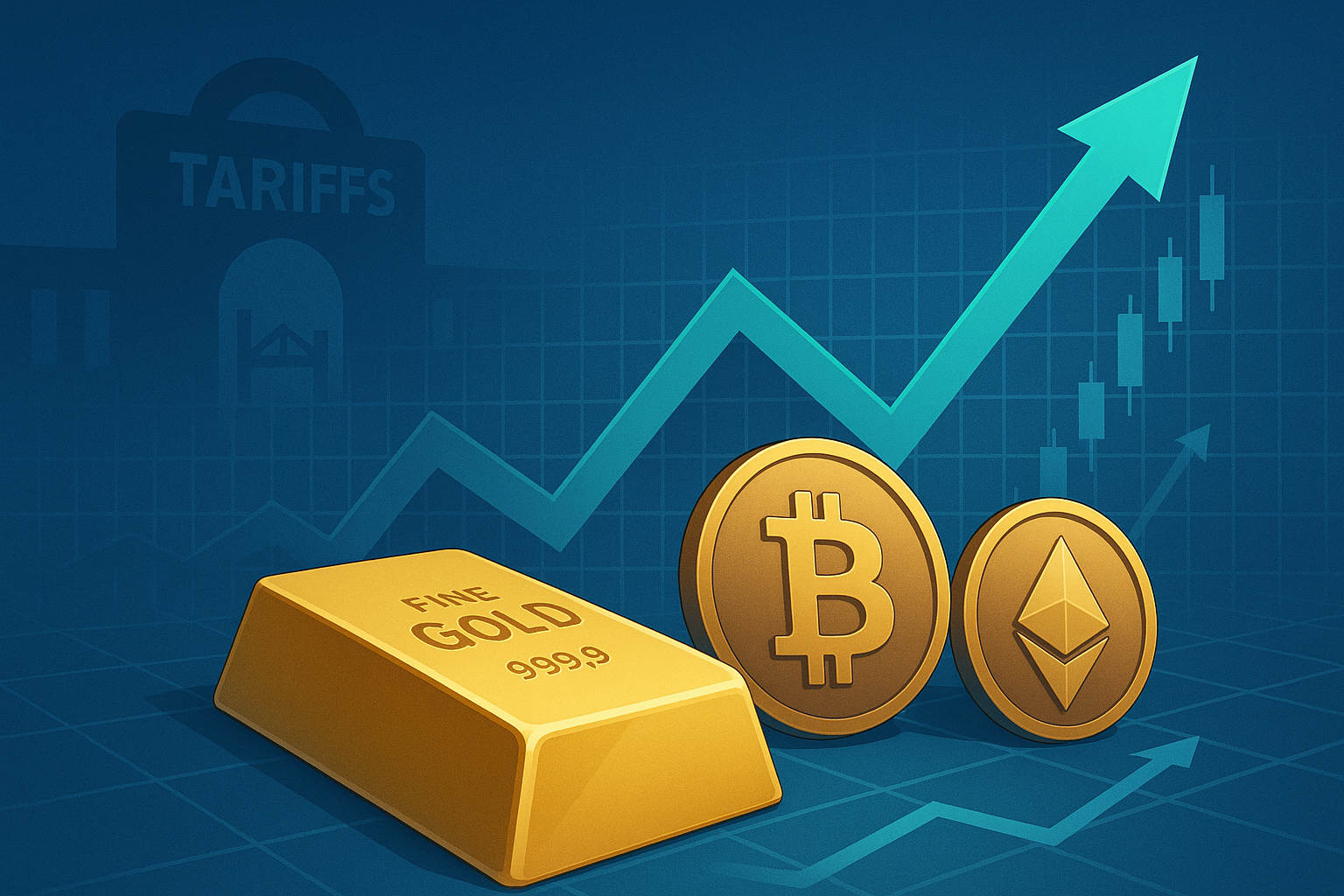Oct 13–19, 2025
Stocks
Weekly market direction:
U.S. equities rebounded after the prior week’s tariff-driven sell-off, as investors shifted focus toward earnings season and early signs of de-escalation between Washington and Beijing. The S&P 500 (+1.7% w/w), the Nasdaq Composite (+2.1% w/w), and the Dow Jones Industrial Average (+1.6% w/w) all advanced, with gains concentrated in large-cap technology and communication services. Volatility subsided compared with the previous week, but traders remained cautious, keeping an eye on the fluid geopolitical backdrop and incoming corporate reports.
Earnings season begins:
Strong corporate results provided the first real counterweight to macro anxiety. JPMorgan (+2.1% w/w), Citigroup (+1.8% w/w), and Wells Fargo (+1.2% w/w) opened the bank reporting cycle with solid net-interest income and stable credit quality, reinforcing confidence that the financial sector can weather higher-for-longer rates. On the tech front, Netflix (+6.4% w/w) outperformed after better-than-expected subscribers and earnings, while Nvidia (+3.5% w/w) and Microsoft (+2.2% w/w) rose as AI demand forecasts strengthened. Conversely, Tesla (-1.4% w/w) drifted lower after production commentary on newer model lines.
Market tone and positioning:
Risk sentiment improved as China and the U.S. signaled intent to resume trade negotiations later this quarter. Equity breadth expanded modestly, with mid-cap and cyclical sectors joining the rebound. Industrials, materials, and communication services outperformed, while defensives lagged as Treasury yields stabilized near recent lows. The combination of easing tensions, resilient earnings, and stable rates set the stage for a more constructive tone heading into the second half of October.
Fixed-income:
The 10-year Treasury yield (~4.2%) remained range-bound after a brief dip early in the week, as investors balanced steady economic data with moderating inflation prints. Credit spreads tightened modestly, and corporate issuance remained active amid supportive funding conditions.
Precious metals and industrial metals
Gold pauses after surge:
After the prior week’s safe-haven spike, Gold (+~1% w/w) edged higher and consolidated gains as trade tensions appeared to cool, closing near ~$2,360/oz. Investors rotated selectively back into risk assets, which tempered additional upside in bullion. Silver (+~0.5% w/w) tracked the move with a smaller advance, closing near ~$28.4/oz, and ETF inflows slowed versus the prior week’s rush.
Industrial metals regain footing:
Base metals stabilized as global trade worries eased. Copper (+1.3% w/w) moved higher, closing near ~$4.15/lb, and Aluminium (+0.7% w/w) also firmed, closing near ~$2,350/mt. The recovery in industrial metals mirrored the broader risk-on tone across cyclicals, suggesting firmer near-term growth sentiment.
Crypto Assets
Bitcoin:
Bitcoin (BTC, -~2.5% w/w) retraced part of the previous week’s volatility-driven drop but finished lower on the week as flows normalized and traders reduced leverage, closing near ~$64,800. Sentiment improved alongside equities mid-week; however, residual risk controls and lighter liquidity kept rallies contained.
Ethereum:
Ethereum (ETH, -~3.0% w/w) followed a similar path, recovering intraday at times but ending the week modestly lower, closing near ~$3,590. Staking demand and Layer-2 activity remained constructive, though derivatives positioning was more cautious after the recent liquidation wave.
XRP:
XRP (+~2.0% w/w) stabilized and posted a small gain on tactical buying tied to payment-rail narratives, closing near ~$0.56, although volumes were inconsistent across venues.
Solana:
Solana (SOL, +~1.5% w/w) outperformed slightly on renewed interest in DeFi projects and higher on-chain activity, closing near ~$155, yet remained sensitive to broader risk swings.
Cardano:
Cardano (ADA, +~1.0% w/w) advanced modestly as developers continued to emphasize scaling milestones, closing near ~$0.40, drawing incremental long-only interest.
Crypto sentiment:
After last week’s forced deleveraging, crypto markets found a tentative footing. Funding rates normalized, open interest rebuilt slowly, and long-term holders added selectively on dips. Nevertheless, elevated realized volatility and tighter risk limits kept price action choppy.
US economic data
Inflation and consumption:
The September inflation mix continued to moderate at the margin, with core measures easing while headline effects were tempered by energy. Retail sales topped expectations on a month-over-month basis, driven by services strength and travel-related spend. Together, these releases supported the view that the economy is cooling without stalling, which helped stabilize risk sentiment.
Labor market and growth outlook:
Initial jobless claims remained subdued and continuing claims edged lower, indicating ongoing labor-market resilience. High-frequency growth trackers pointed to a modest expansion pace, broadly consistent with a soft-landing narrative through year-end.
Outlook — coming week
Investors will monitor additional earnings from Tesla, Procter & Gamble, American Express, and Johnson & Johnson, as well as several Fed speakers ahead of the next policy meeting. With trade rhetoric calmer and inflation trends mixed but manageable, the key variable will be guidance: whether margins, capex plans, and topline trajectories confirm that corporate America can navigate a slower but still expanding backdrop.
For crypto, watch ETF net flows and the rebuild in open interest to judge whether stabilization becomes a durable base. For metals and rates, attention will center on whether the rotation out of havens persists as volatility cools, or stalls if headline risk reappears.
Summary
The week of October 13–19, 2025, marked a measured reset. Stocks advanced and breadth improved as tariff fears eased and earnings surprised to the upside. Gold held firm but slowed, industrial metals perked up, and crypto worked through the tail of a deleveraging shock. The tone remains cautiously constructive, contingent on guidance quality and the absence of renewed policy shocks.


